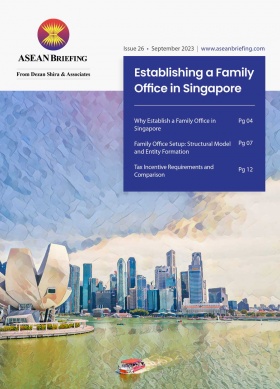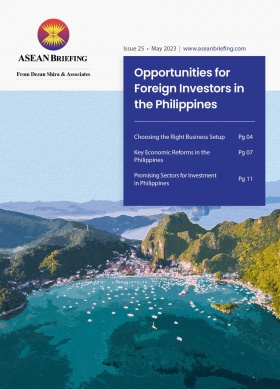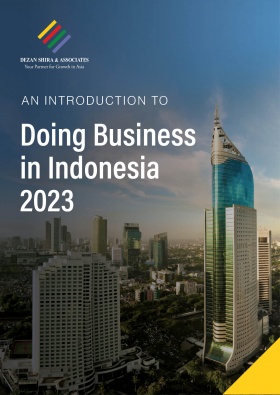ASEAN, Canada Edge Closer to Concluding Free Trade Agreement
ASEAN and Canada have edged closer to concluding a free trade agreement (FTA) with Canada officially achieving the strategic partnership status during the ASEAN Summit in late September. Canada has been a dialogue partner to ASEAN since 1977.
Negotiations for an ASEAN-Canada Free Trade Agreement (ACAFTA) agreement began in 2021 and is expected to be concluded by 2025. For Canada, ACAFTA presents an opportunity to access the huge Southeast Asia market of over 600 million consumers in addition to a region that is predicted to have the fourth-largest economy in the world by 2030.
Canada already has a free trade arrangement with several ASEAN states (Malaysia, Singapore, Vietnam, and Brunei) through their membership of the Comprehensive Progressive Agreement for the Tran-Pacific Partnership (CPTPP), which was formally signed in 2018.
Canada and ASEAN recorded US$26 billion in total trade in 2022 with ASEAN enjoying a surplus of just over US$17 billion.
Opportunities for Canadian investors
Agriculture
Southeast Asia’s wheat consumption is expected to increase due to the region’s growing population and shifting diets. It is estimated that ASEAN accounted for 15 percent of global wheat imports in 2021 with the region’s climate making it difficult to grow the crop — domestic production meets less than one percent of requirements. In addition to this, the region imports significant amounts of soybean, maize, and livestock.
Indonesia is the biggest importer of wheat in the region with imports in 2022 reaching some 9 million tons, with Canada accounting for approximately 20 percent market share, second behind Australia. Canadian durum wheat is especially popular in Indonesia, as it is used to make bread and noodles. Indonesia is the world’s second-largest instant noodle market only after China with demand reaching over 12 billion servings yearly.Digital economy
The e-Conomy report compiled by Google, Temasek, and Bain & Company stated that Southeast Asia’s digital economy is forecasted to reach a gross merchandise value (GMV) of US$330 billion in 2025, a huge increase from the US$194 billion in GMV recorded in 2022. As such, with an increasingly tech-savvy, and prosperous consumer class, coupled with over 450 million internet users, the region’s digital economy offers a wealth of opportunities for Canadian investors.
E-commerce will be the main driver of growth for the digital economy with an anticipated GMV of US$211 billion in 2025 from US$131 billion in 2022. Travel is expected to be the next contributor of growth with an expected US$44 billion in GMV by 2025, an increase from the US$17 billion recorded in 2022, although many countries were still gradually enabling international travel that year. Food transport and media are the next sub-sectors of growth for Southeast Asia’s digital economy with a projected GMV of US$39 billion and US$36 billion by 2025, respectively.
Indonesia will be the region’s largest digital economy with a projected GMV of US$130 billion in 2025 and between US$220 and US$360 billion by 2030. The country’s digital economy had an estimated GMV of US$77 billion in 2022.
Infrastructure
Southeast Asia requires an annual average investment of US$210 billion to meet its infrastructure needs, particularly in response to rapid urbanization. The region is expected to see a population of over 700 million by 2040 and an additional 115 million living in urban areas. Without infrastructure investments, this will lead to greater congestion, pollution, and inadequate access to basic services.
As such, there will be ample opportunities for Canadian companies in telecommunications, water, and road development, in addition to energy, sea, and airport infrastructure.Further, countries in the region are implementing important regulatory reforms that are needed to make infrastructure projects more attractive to the private sector. Through streamlining private-public partnership (PPP) laws, procurement processes, as well as independent PPP government entities, countries in the region can generate more bankable PPP projects.
Conclusion
In conclusion, the recent developments in the ASEAN-Canada relationship, including the official acknowledgment of Canada as a strategic partner during the ASEAN Summit, signal promising prospects for both regions. The forthcoming ASEAN-Canada Free Trade Agreement (ACAFTA) represents a significant step forward in strengthening economic ties. As negotiations progress and are expected to conclude by 2025, this agreement holds the potential to unlock a wealth of opportunities for Canadian investors across various sectors.
About Us
ASEAN Briefing is produced by Dezan Shira & Associates. The firm assists foreign investors throughout Asia and maintains offices throughout ASEAN, including in Singapore, Hanoi, Ho Chi Minh City, and Da Nang in Vietnam, in addition to Jakarta, in Indonesia. We also have partner firms in Malaysia, the Philippines, and Thailand as well as our practices in China and India. Please contact us at asean@dezshira.com or visit our website at www.dezshira.com.
- Previous Article Why Establish a Family Office in Singapore
- Next Article Myanmar Implements Long-Awaited Minimum Wage Hike








